Smartwatches have only grown in popularity over the years. They’ve steadily introduced more and more features that make them desirable over a traditional watch. Two smartwatches in particular that are popular are the Apple Watch Series 7 and the Samsung Galaxy Watch4.
While the two share many of the same functions, they also could not be more different. Here’s how the two smartwatches compare.
Apple Watch Series 7 vs Samsung Galaxy Watch4
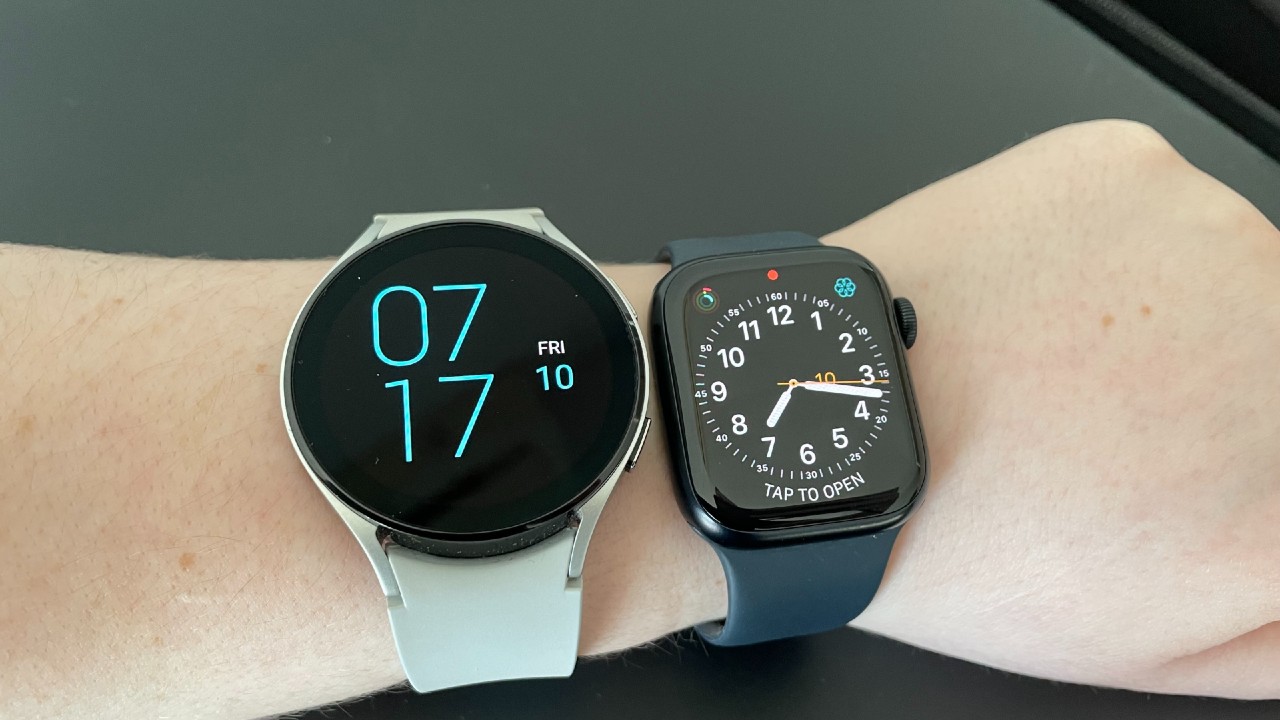
Specs
Samsung Galaxy Watch4
- Size: 40 or 44mm
- 1.4-inch main display (34.6mm), 450×450
- 16GB storage
- 1.18GHz processor
- IP68
- Up to 40 hours battery life
Apple Watch Series 7
- Size: 41mm or 45mm
- 1143 sq mm display, 396 by 484 pixels
- 32 GB storage
- U1 chip
- IPX6, WR50
- Up to 18 hours battery life
Design
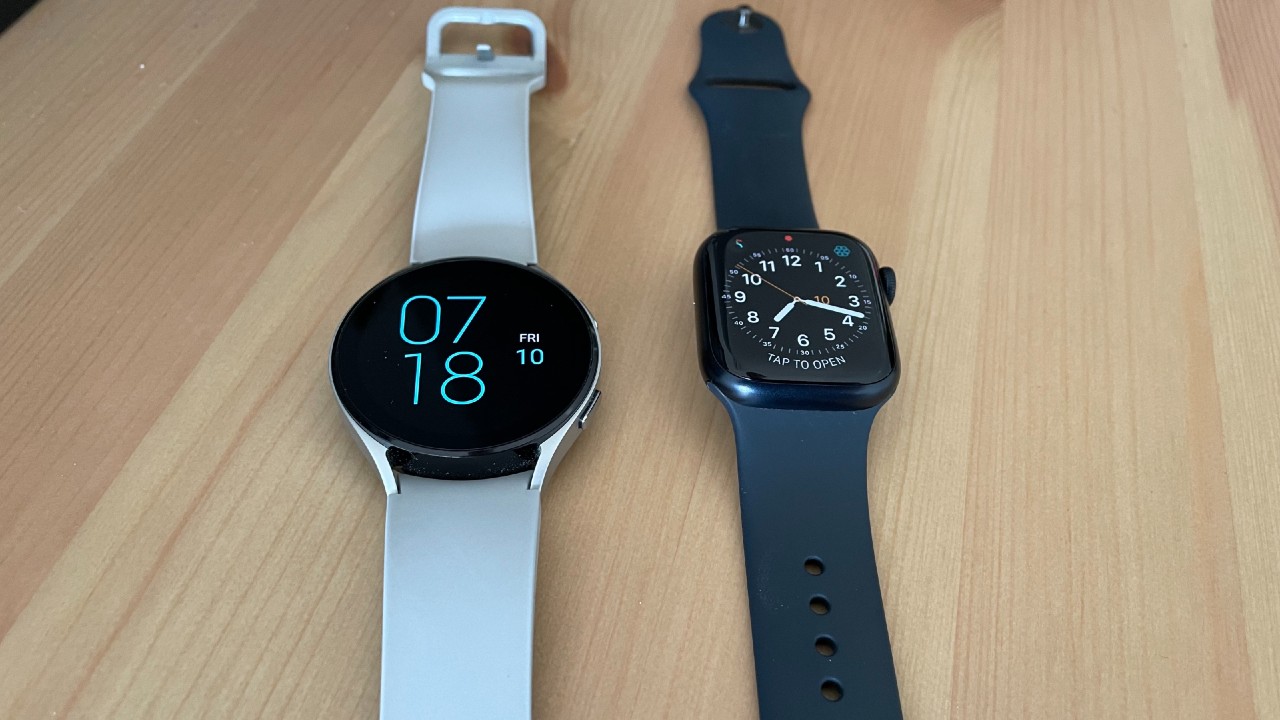
While the Apple Watch and Galaxy Watch do very similar things, aspects of their design are very different.
The most obvious difference is the physical design. The Apple Watch Series 7 is more square in shape and this generation features the largest display on an Apple Watch yet. It’s noticeably a lot bigger and easier to read, but is still in line with the style of the Apple Watch range.
The Galaxy Watch4, on the other hand, looks a lot more like a watch. It has a circular face with two buttons on the right side. This gives the Galaxy Watch4 the advantage of actually looking like a normal watch, which is a lot sleeker and somewhat classier than the square design of the Apple Watch.
Having worn both watches, I can vouch that they are both very comfortable. The Galaxy Watch4 was slightly larger than necessary on my wrist, but both designs feel natural to wear and very easily fulfilled their primary function of telling the time.
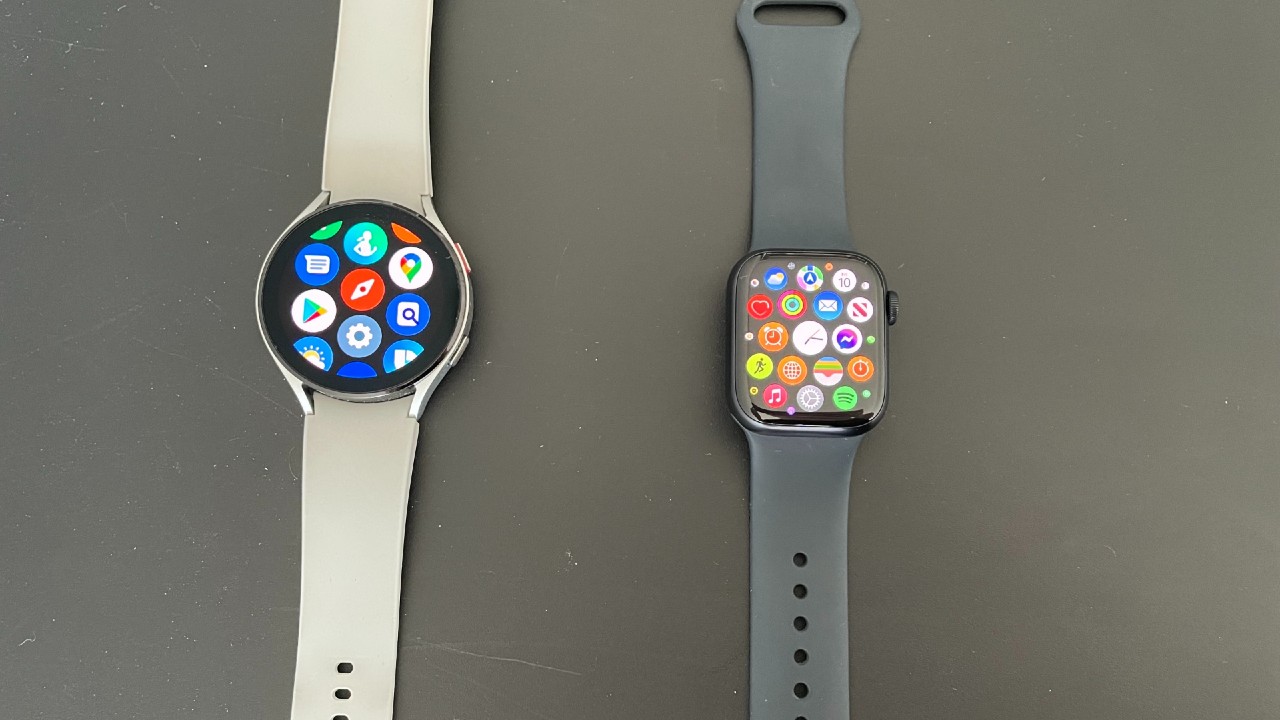
While either watch can be paired with a non-Samsung or non-Apple device, they are built on systems that are designed to work with phones in the same system.
The Apple Watch Series 7 runs Apple’s WatchOS 8, which pairs perfectly with things like Fitness+ and the health app on iPhone.
The Galaxy Watch4 meanwhile uses Wear OS 3, one of the biggest updates to Samsung’s watch OS yet. Being a Google system, you’ll find Wear OS 3 on other smartwatches as well, like Fitbit, so if you’re familiar with the system, it will be easy to adapt to the Galaxy Watch4.
The design of both software systems is easy to use and elegant in their own way. Personally, I think the pairing of Android 12 and Wear OS 3 on the Samsung devices makes for a nice design overall. The watch faces are more interesting, information is nicely displayed and feels in sync across the entire device.
Information from the health systems syncs quickly across both the Apple and Samsung devices, and it’s easy to get a reading on things like your vitals and fitness straight away.
Colour-wise, the Apple Watch Series 7 does have a larger range of fun aluminium casings to choose from. Options like red, green and blue are all on offer. Meanwhile, the Galaxy Watch4 has more traditional casings like black, silver and beige.
Overall, I think if you prefer a smartwatch that looks akin to a classic wristwatch, the Galaxy Watch4 is your device. However, if you prefer to keep your devices in the same ecosystem, then it makes sense to pick up a smartwatch that matches the Apple or Samsung system you’re used to.
Features
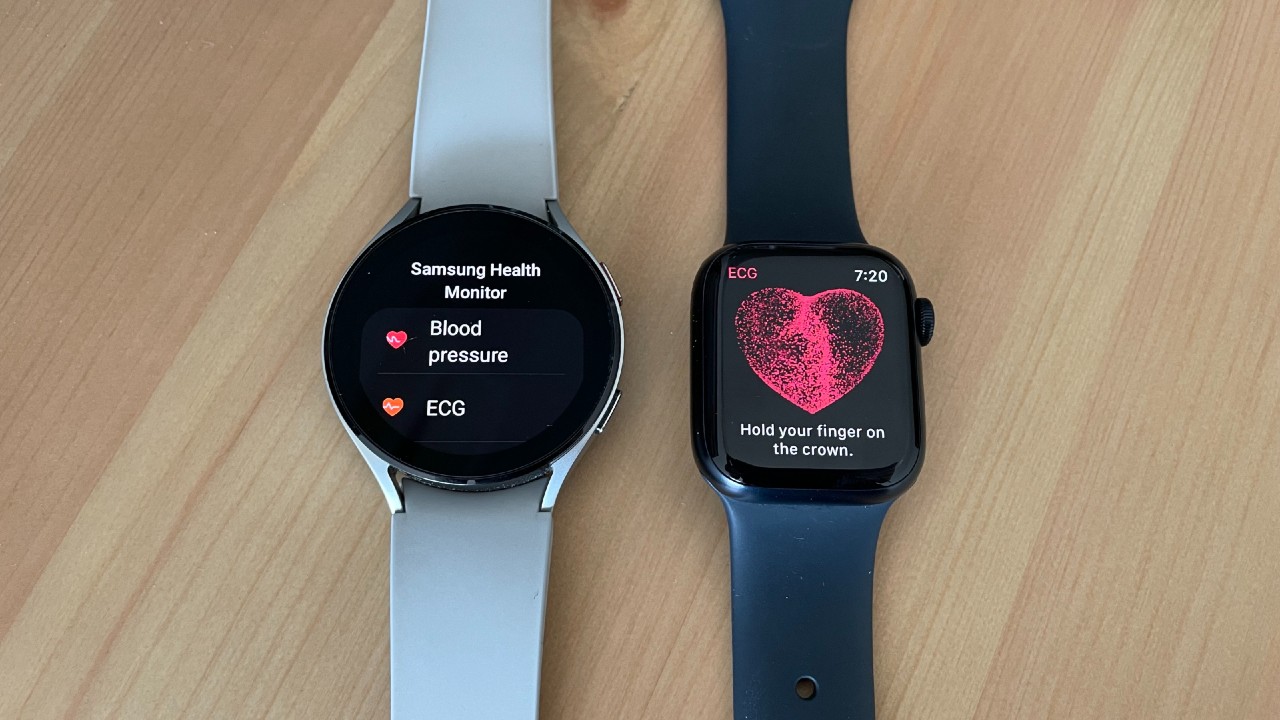
As we mentioned in our review, the Apple Watch Series 7 doesn’t introduce too many extra health or fitness features that previous generations didn’t have. Its big drawcard is the enhanced display – and in that department, it truly delivers. One thing that is a win for Series 7 in Australia is that ECG monitoring has finally been approved by the TGA, so we now have access to ECG features on the Apple Watch from day one.
Sensor-wise, on the Apple Watch Series 7 you’re looking at blood oxygen monitoring, ECG readings, sleep tracking, a heartbeat monitor, a pedometer and fall detection.
The Galaxy Watch4 has had a bit of an upgrade in the health and fitness department this time around. A new BioActive sensor can measure heart rate, body fat percentage and body composition. It can also track your sleep, take an ECG and monitor your blood pressure from your wrist.
This makes both the Apple Watch Series 7 and Galaxy Watch4 pretty on par with health and fitness features. The GalaxyWatch4 packs a bit of an extra punch with its body composition measurements, so if that’s what you’re after in a watch, this one is worth considering.
Battery-wise, the Samsung claims the Galaxy Watch4 gets up to 40 hours of battery life whereas the Series 7 Apple Watch only makes it to 18.
The Apple Watch’s battery life has always been a sticking point, particularly as more people wear their watches overnight to track sleep. One thing Apple has done is increase the fast charging capabilities of the Series 7 with a new cable, but it’s still hard to hold a candle to the 40 hours of the Galaxy Watch4.
Price
When it comes to price, there’s a pretty stark difference between the two smartwatches.
The 40mm Bluetooth edition of the Galaxy Watch4 starts at $399, with the 44mm beginning at $449.
The Apple Watch Series 7 Bluetooth versions start at $599 for the 41mm and $649 for the 45mm.
As far as I can see, both are quality smartwatches, so I’m unclear why the Series 7 watch is $200 more than the Galaxy Watch4 apart from the fact that it’s Apple.
The Samsung Galaxy Watch4 is a good watch for an even better price, but if you’re an Apple simp who loves the brand, that extra few hundred may be worth it.
The verdict
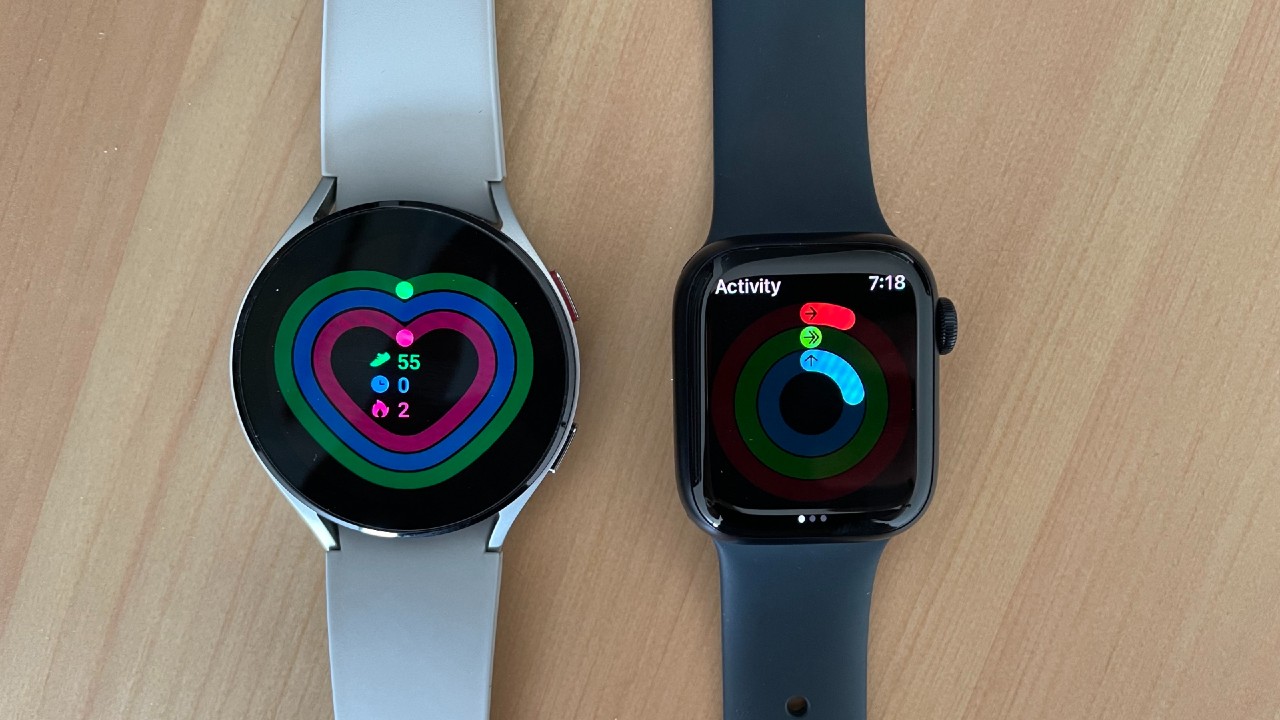
I’ve honestly been impressed with both Samsung’s Galaxy Watch4 and the Apple Watch Series 7. If you’re a newbie coming into the smartwatch market, there are more pros than cons to both.
The Samsung Galaxy Watch4 has Apple’s Series 7 beat in terms of price and battery life, but both have very similar health and fitness tracking features.
If you’re coming to your decision on design alone, the Galaxy Watch4 looks more like a traditional watch. You can even invest in the more expensive Classic version of the Watch4 which will simulate the design of a wristwatch even more.
While the Apple Watch Series 7 has had a huge display improvement upon previous generations, the circular design of the Galaxy Watch 4 just looks nicer.
Another big factor for making this decision is your brand. If you’re ingrained with Android or iOS devices, you’re going to find a watch in those same systems easier to use. It’s hard to deny that integration is smoother and software is easier to adapt to when all your devices are in the same ecosystem.
So which one would I choose?
Well, I’m an Apple person and I’ve been incredibly happy with my Apple watch for years now, even more so with the Series 7. But I can’t deny that I really enjoyed using the Galaxy Watch4, almost as much as I enjoyed using Samsung’s foldable phones. Could this turn me to the Samsung side? Send help.
If you’re after a smartwatch for nifty health features, integration with your phone and, y’know, to tell the time, both the Apple Watch Series 7 and Galaxy Watch4 will serve you well.
Don’t forget to grab one of our Apple promo codes before heading to checkout, so you can save on a next generation smartwatch.
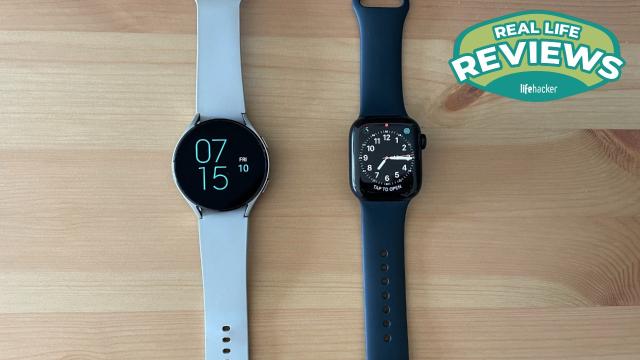
Leave a Reply
You must be logged in to post a comment.